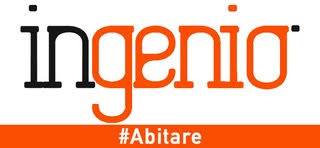L’ENEA presenta le applicazioni della luce “disegnata” con il laser: OLED e OLET
I cosiddetti OLED - Organic Light Emitting Diode sono dei dispositivi luminosi di nuova generazione, che garantiscono minori consumi di energia, elevate prestazioni e una durata più lunga. Questi dispositivi possono essere utilizzati negli interni degli autoveicoli e in tutti i settori dell’illuminazione.
Le ricerche condotte dall’ENEA nel settore delle nuove sorgenti luminose con il finanziamento del progetto europeo LAMP, coordinato dall’ENEA, hanno permesso di ottenere innovative applicazioni di questi dispositivi, che sono stati presentati oggi all’ENEA nel corso di un convegno. Si tratta di attività di ricerca nel campo delle nanotecnologie che vengono condotte nei laboratori dei suoi Centri di Ricerca di Brindisi, Portici, Casaccia (Roma) e Faenza. In particolare è stato illustrato il brevetto ENEA per ottenere la luce attraverso il trattamento laser di un polimero nanocomposito.
Gli OLED, insieme agli OLET - “Organic Light Emitting Transistor”, fanno parte di un nuovo concetto di illuminazione, detta a stato solido, che in futuro sostituirà gli odierni sistemi di illuminazione e che favorirà l’innovazione e la crescita delle industrie italiane interessate.
Al progetto LAMP partecipano cinque gruppi di ricerca e due industrie di 5 nazioni europee: Italia, Regno Unito, Lituania, Austria, Germania.
Per maggiori informazioni:
www.enea.it/it/enea_informa/events/lamp/Flyer_workshop_LAMP130328.pdf
Coordinatore del Progetto Lamp: francesco.antolini@enea.it
FONTE: ENEA
LAMP - LASER INDUCED SYNTHESIS OF POLYMERIC NANOCOMPOSITE MATERIALS AND DEVELOPMENT OF MICRO-PATTERNED HYBRID LIGHT EMITTING DIODES (LED) AND TRANSISTORS (LET)
Vision & Aim
The overall goal of the LAMP project is to develop a new method for making light-emitting devices, using laser micro-patterning to generate quantum dots (QDs), giving new high performing materials for organic light-emitting transistors (OLETs) and diodes (OLEDs).
Currently OLEDs are made either by depositing, small organic molecules by evaporation through a shadow mask, or by depositing polymers from solution by processes such as inkjet printing. However, these techniques have several drawbacks, e.g. material wasting (evaporation), expensive apparatus (vacuum chambers for evaporation), use of lithographic processes or masks for patterning (inkjet or evaporation).
New methods avoiding or reducing all the aforementioned disadvantages will be of outmost importance for the LED industry.
The LAMP project will demonstrate how OLEDs containing QDs can be produced without the use of any shadow mask or inkjet methodology decreasing the industrial costs and improving the light-emitting efficiency.
The potential impact of the project in scientific and industrial terms is based on the innovation for the production of QDLEDs. QDs are already used mixed with polymer, but their selective direct formation on the polymer matrix can enhance the efficiency and lifetime of the device. In addition the use of the laser technology will be a real step ahead for industry because it applies laser technology, which is a well established technological platform in industry.
The LAMP consortium gathers 7 groups belonging to five different countries, and it has been built with the scope to cover not only the expertise needed for the project, namely materials synthesis, materials laser processing teams and device developers, but also to recruit research groups actively working in the field of LED research and manufacturing.
The LAMP project proposes a new method to apply nanotechnologies in the field of low energy consumption light production. The project combines three main ideas: nanoparticles for light emission, laser action to produce them and solid state light production.
